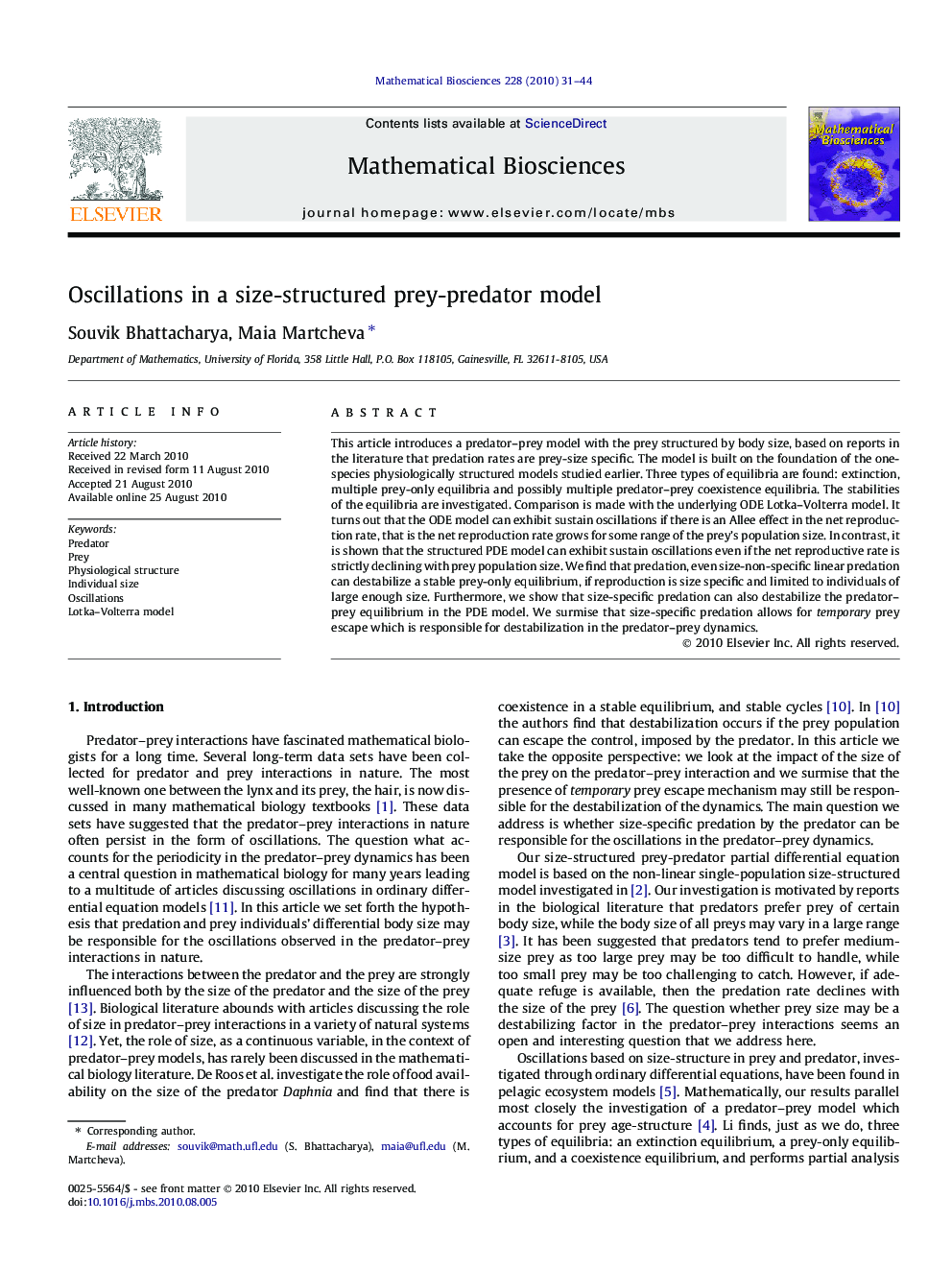| Article ID | Journal | Published Year | Pages | File Type |
|---|---|---|---|---|
| 4500521 | Mathematical Biosciences | 2010 | 14 Pages |
This article introduces a predator–prey model with the prey structured by body size, based on reports in the literature that predation rates are prey-size specific. The model is built on the foundation of the one-species physiologically structured models studied earlier. Three types of equilibria are found: extinction, multiple prey-only equilibria and possibly multiple predator–prey coexistence equilibria. The stabilities of the equilibria are investigated. Comparison is made with the underlying ODE Lotka–Volterra model. It turns out that the ODE model can exhibit sustain oscillations if there is an Allee effect in the net reproduction rate, that is the net reproduction rate grows for some range of the prey’s population size. In contrast, it is shown that the structured PDE model can exhibit sustain oscillations even if the net reproductive rate is strictly declining with prey population size. We find that predation, even size-non-specific linear predation can destabilize a stable prey-only equilibrium, if reproduction is size specific and limited to individuals of large enough size. Furthermore, we show that size-specific predation can also destabilize the predator–prey equilibrium in the PDE model. We surmise that size-specific predation allows for temporary prey escape which is responsible for destabilization in the predator–prey dynamics.
